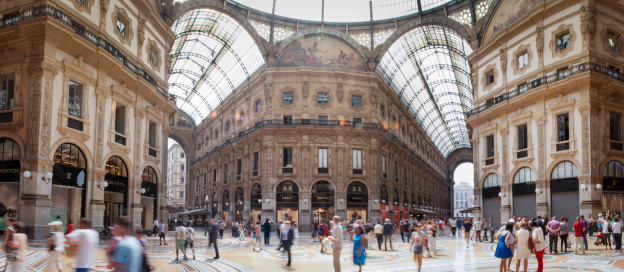Breathless digital enthusiasts — myself among them — have been predicting a massive shift from store-based to online retail shopping for the past 20 years. And while that transition is well underway, with online sellers now capturing eight percent of total retail spend, and 75% of the growth in spend since 2000, the long-predicted “death of retail” is turning out to be different from, and much more interesting, than many analysts expected.
There are two complementary drivers for the stubborn persistence of location-based shopping: the “what” (the actual merchandise on offer in local stores) and the “why” (the many complex reasons why we shop, beyond the simple fulfillment of material needs / wants). Together, these forces are driving a bifurcation of retail into two distinct approaches that are optimized to address two very different human needs.
Online retailing has grabbed most of the growth in retail because it’s really, really good at removing friction from the purchase of known, branded and commodity items. From books and CDs, to toothpaste and diapers, to mass-market merchandise from global brands, there is simply no more convenient way to shop. Online stores are open 24/7, comparison shopping for price and selection is easy, and the steady improvement in fulfillment logistics has most purchases arriving within just a few days (even same-day in some cases).
If you know what you want and want it fast with a minimum of hassle, online wins every time.
But a lesson I learned 20 years ago working for Yvon Chouinard has stuck with me, and seems more true and important with each passing year: shopping has as much to do with stories as it does with stuff. In our modern consumer society, we’ve been trained to believe that every purchase we make says something about us as human beings, meanings that are rooted in the stories we tell ourselves about the kind of person we are, or want to be.
Of course, different kinds of purchases carry different “narrative weights” — the toothpaste you use might not say that much about you, but the clothes you wear are considered by most consumers to be deep signifiers of their identity and relationship to the world. Unsurprisingly, when material goods are so heavily freighted with cultural content, the experience of choosing and purchasing them takes on greater symbolic significance as well.
Compounding the emotional power of the “what” in retail is our equally complex human relationship with its “why”. For as long as humans have lived in fixed settlements, “market days” have been among the most exciting and socially rich experiences our society has to offer. Cloaked in the necessary work of buying supplies for our households, and with a ceremonial cadence of weekly or monthly outings, we give ourselves license to visit with friends, flirt with strangers, parade our constructed identities before an appreciative public audience, and quietly strive for status within the subtle coded languages of our various tribes.
After all, what is the point of owning all that deeply significant stuff if we don’t have a place to show it off to the world?
So as e-commerce doubles down on selection, price and convenience, physical retail is making the most of its strengths at integrating unique, hard-to-find merchandise with rich social and emotional experiences in the real world. Specialty retail is re-urbanizing, with reclaimed buildings and custom architecture being called on to support the increasingly rich storytelling (and social display) needs of the retail experience. And suburban malls — once the natural home of big-box commodity merchants — are either failing or being reborn as highly-specialized social + shopping experiences for niche audiences.
This doesn’t mean that location-based retail is immune to the changes wrought by e-commerce; in fact, the life of a physical merchant is harder than ever. Not only do they have to be truly excellent at all the traditional skills — merchandise selection, in-store merchandising and delivering high-touch customer experiences — they now also have to meet customers where they want to be met digitally — with compelling online experiences, data-based personalization and uniquely-tailored offerings that bring at least some of the magic of the in-store feeling to the customer’s mobile device, on demand.
The pure e-commerce tide will continue to rise, but the most exciting innovations in retail will come from merchants who successfully blur the boundaries of physical and digital, using the unique power of both approaches to feed shoppers’ emotional needs as strongly as as their practical wants.
(The Creative Commons image at top is of Milan’s Galleria Vittoria Emanuele II, by Mike and Annabel Beales)

